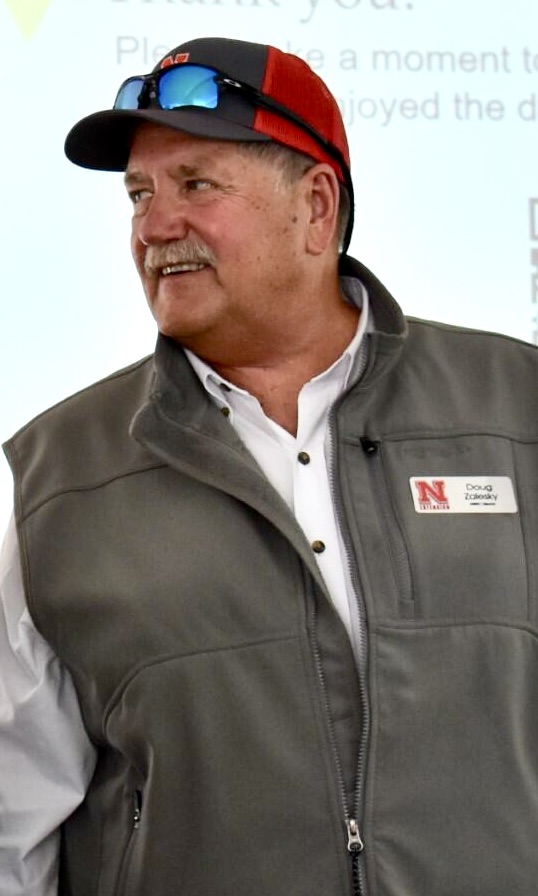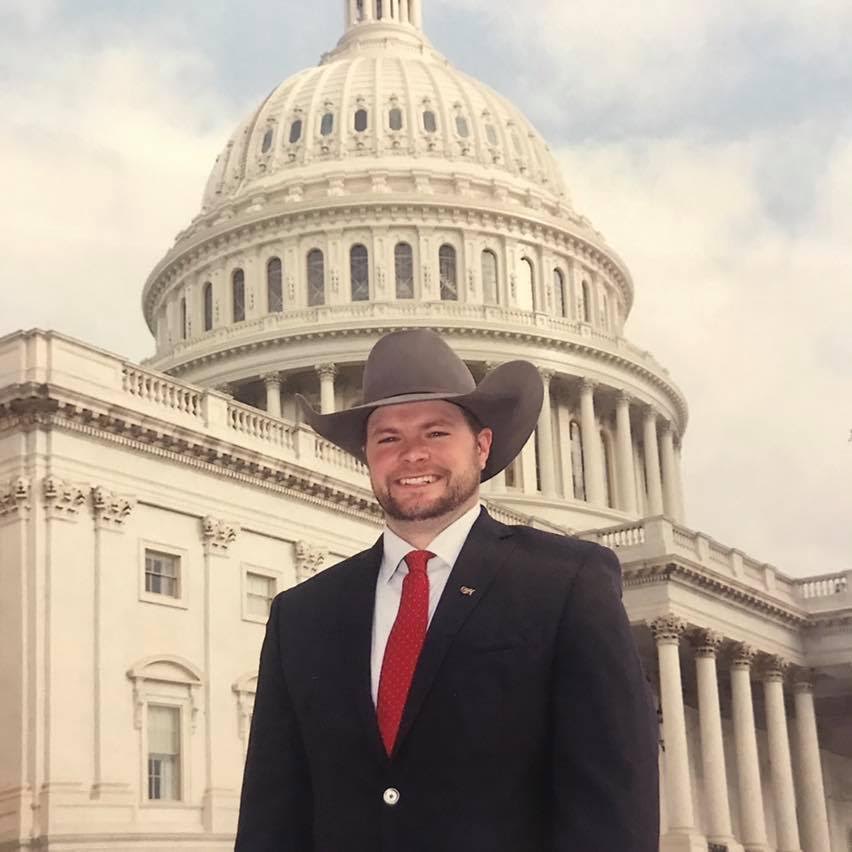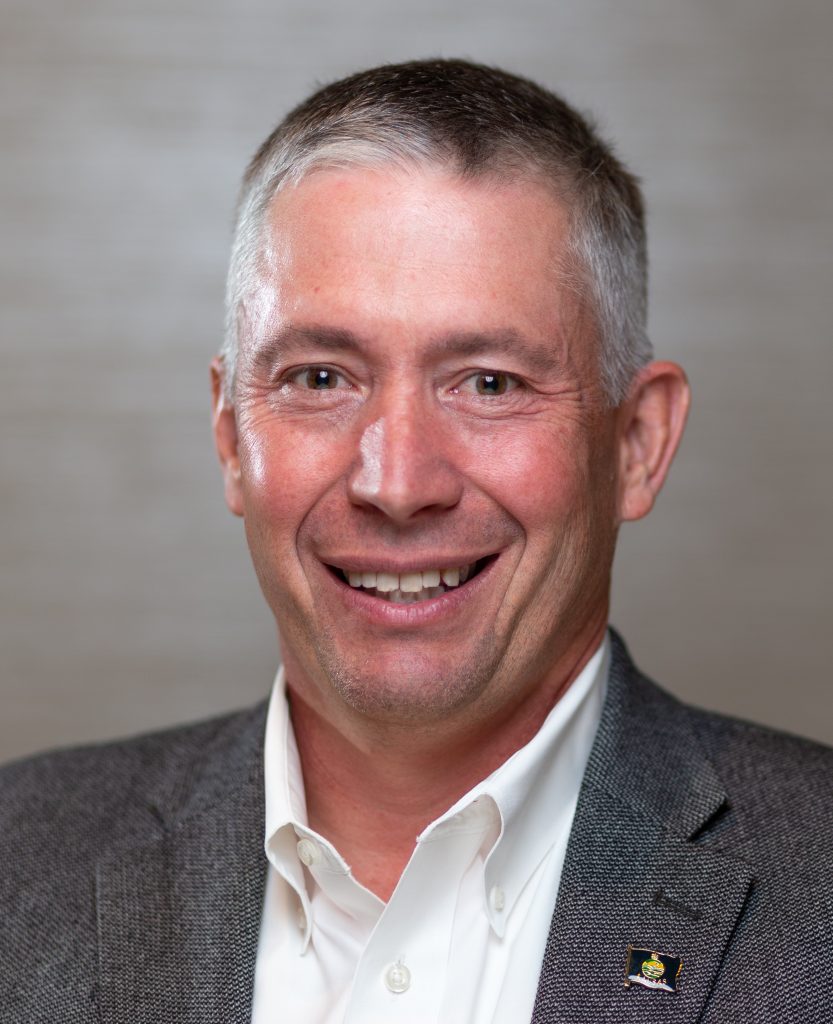Cattle mean so much to Nebraskans that their major university, and some key donors, injected millions of dollars into the business of raising the valuable critters.
They already out-number people in Cornhusker country by a ratio of 3.31 to 1, and promoters have added “The Beef State” moniker to their tag.
Now the University of Nebraska is in the process of reaping more benefits with The Klosterman Feedlot Innovation Center. A drone aerial photo of the Klosterman Feedlot Innovation Center shows the center. (Photo courtesy of Emily Hanson, of the University of Nebraska-Lincoln.)
Its ribbon-cutting was celebrated in June near Ithaca, 30 minutes northeast of Lincoln, the state capital and home of UNL’s main campus.

“Five or six years ago, it became evident that we wanted to do something related to feedlot research because the feedlot industry is huge,” said Doug Zalesky, director of the Eastern Nebraska Research, Extension and Education Center. The $7.2 million Feedlot Innovation Center is a vital part of it.
“We wanted to design a new facility that would allow us to utilize new technology that could be implemented on a commercial scale so that the research that comes out of it would be directly applicable to commercial feedlots,” he said.
The estimated 50-acre research feedlot, with a capacity of 2,500 head, will welcome its first cattle in about a month, launching a program to test them on cutting-edge equipment and facilities.
Equipping the industry
The center is a “commercial-scale” operation serving as “a living laboratory for ag-tech companies, equipment manufacturers and other stakeholders to test and observe new technologies in a real-world setting,” according to its website.
Students, researchers, cattle producers and others in the industry can gather in a collaborative, cutting-edge climate to solve issues and grow the industry together.
“(Cattle) will be monitored and studied every day they’re here,” Zalesky said.
Another major focus is animal health and feed rations, he said.
Klosterman legacy

Descendants of the late John C. Klosterman—the center’s namesake—aim for the center to inject top-notch practices into Nebraska’s cattle industry, focusing both on management and science, while also boosting profits.
“My grandfather really believed in the future of agriculture. He was not only a banker, but an extremely good businessman, very meticulous,” said Hank Klosterman of David City, Nebraska, who today owns the John Henry Cattle Company.
“(John C.) was more on the business side than somebody who said ‘This is the way we’ve always done it.’ This (center) is not necessarily focused on the animal science side, but on business and economics, along with cattle production,” Hank Klosterman said.
When the hooved subjects arrive, the center will investigate the best accommodations, surfaces and equipment for them, Zalesky said.
“We get a lot of questions from commercial feedlot operators about new technology and new types of facilities,” he said. “We’re going to be evaluating them as they apply to feedlot production.”
Continuing education
Klosterman is a veteran in the industry who learned the game in several states. He lived in Finney County (southwest Kansas) from 2014 to 2016, and he worked in procurement for a number of feedlots in Kansas and Texas.
“I gained vast knowledge of cattle feeding on a large scale in cutting-edge facilities with a progressive approach,” Hank Klosterman said. “I realized students at K-State, Texas Tech and Oklahoma State were more advanced on the business side of cattle feeding, and if we (in Nebraska) wanted to compete on a national scale, we needed to be good businessmen and great cattlemen.”
The aim is to tweak the Cornhuskers’ program.
“Kansas has much bigger feedlots that are built in the scale of vertical integration,” Klosterman said. “Their students are more like-minded in larger scale production, while (UNL) was producing students who wanted to go back to the farm. Now we’re looking to train production feedlot managers.”
The Klosterman Innovation Center aims to shift the “nuts and bolts” of raising cattle from not just managing to “creating a financially successful business,” he said.

In addition to cutting-edge equipment, the center is managed by some of the nation’s best to lead the research and carry it out, said Dan Thomson, DVM, of Manhattan, Kansas, managing partner of Production Animal Consultation. PAC consults on more than 25% of the fed cattle in the United States, he said. The majority of its clients are in Nebraska, Kansas, Colorado and Iowa.
“We should all be grateful to the University of Nebraska for fulfilling the land-grant mission so those of us in the industry can learn without having to foot the bill ourselves,” Thomson said. “This is a huge asset for all people who feed cattle in the High Plains region and a great move for Nebraska cattlemen.”
Looking at details
The center will delve deeply into a number of issues, such as cattle pen surfaces.
“We have traditional outdoor dirt pens that you would find at a commercial feedlot, and we have some with roller compacted concrete (without reinforcement steel), poured on the ground and rolled out smooth,” Zalesky said. “It makes it a cheaper alternative to regular concrete. The question is how cattle will perform on that surface versus a dirt lot.”
Part of the advantage of rolled concrete is not having to deal with mud, he said, which would keep the pens cleaner.
“One would hope it might be beneficial to the health of the animals, as well as their performance, also the quality of the manure coming out (used as fertilizer),” Zalesky said. “It should be a higher quality because it’s not mixed with dirt.”
Another important issue is housing cattle in barns versus open air. Two “comfort barns” with nine pens holding 60 head per pen are built over deep pit systems to collect manure and urine.
“The flooring is slatted concrete with rubber mats on top,” Zalesky said.
One barn has a gable roof and the other a mono-slope to gauge air flow and the difference in environments.
A “feed technology barn” with automatic feeding systems from Hokofarm Group “will allow us to gather information on individual animals, such as how much they’re eating, how often they eat and how long they eat,” he said.
The fourth building is the center’s handling facility, featuring a Daniels Manufacturing system from the Nebraska Sandhills and a Canada-based Arrowquip system. Both are billed to handle and move cattle, weigh and streamline the vaccination process.
“We’ll be able to compare (the systems) and see if there are any differences,” Zalesky said. “We also have a classroom with large glass windows so that students and producers can watch the movement of the cattle. Another goal of this facility is to train students (college and high school graduates) and adults.”
Confinement feeding is common in the Missouri River Valley, PAC’s Thomson said, but the practice diminishes gradually going into western Nebraska and neighboring states, where the humidity isn’t as high, and annual rainfall is lower.
Housing, manure management and the associated feeding rations are all important.
“We can’t have sustainability without profitability. That’s got to be the core process of these projects,” he said. “Animal health, welfare, performance and comfort are all the things that are going to be researched in these facilities.”
UNL has some 3,000 students seeking agriculture-related degrees, Zalesky said, but drastic enrollment spikes aren’t expected as a result of the Klosterman Feedlot Innovation Center.
“We’re adding more opportunities to the existing curriculum and to research,” he said.
UNL students can choose to pursue animal science production, nutrition and management degrees at the undergraduate, master’s and doctorate levels, he said.
The center is operated by roughly 12 support staff, along with some six members of UNL’s research faculty in animal sciences, engineering and biological systems and graduate students.
“The University of Nebraska has put together a group of faculty and staff who are second to none. It takes great people dedicated to the land-grant mission,” Thomson said. “This will be core to getting students at UNL excited to join our beef industry. Young people coming to our industry is our most valuable natural resource.”
“(The center) is a huge asset for all people who feed cattle in the High Plains, but not everybody has to be a cattle feeder to be involved in our business,” he added
The ultimate goal to Zalesky is to make feedlot production more efficient and profitable for the industry.
“We want to be able to answer questions for producers,” he said, “and provide information that would be beneficial in their decision-making.”
FACTOID:
Lead faculty representative for The Klosterman Feedlot Innovation Center, Galen Erickson, Ph.D., professor of ruminant nutrition at the University of Nebraska-Lincoln, was out of the country during the writing of this story and could not be reached for comment.
To learn more about the center, visit animalscience.unl.edu.
Based in Lincoln, Nebraska, UNL enrollment in the fall of 2023 was 23,600. The University of Nebraska System totaled 49,419 students, according to nebraska.edu.
FACTOID:
Nebraska cattle facts:
• As of Jan. 1, 2024, Nebraska had 6,250,000 cattle and calves, and 2,750,000 cattle on feed. This puts Nebraska second in the country for cattle, after Texas, and accounts for 7.17% of the U.S. cattle population. Nebraska also has a higher ratio of cattle to people than many other states, with 3.31 cattle per person.
January 2022 figures illustrate that Nebraska continues to have far more cattle than people. The 1.8 million cows combined with the nearly 5 million head that are annually fed in Nebraska total nearly 6.8 million cattle.
Source: Nebraska Beef Council




